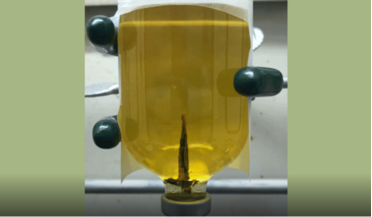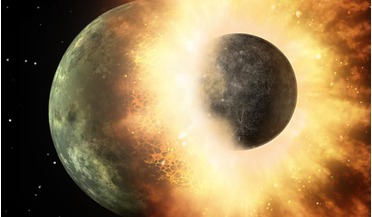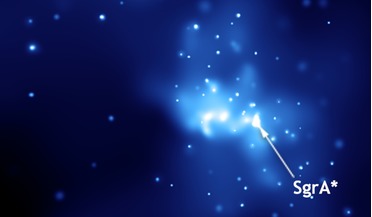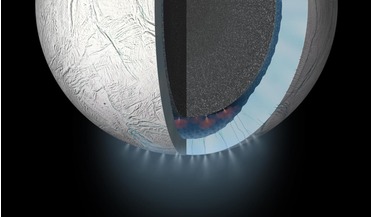 04 March 2019
Does life grow like this elsewhere in the cosmos?
04 March 2019
Does life grow like this elsewhere in the cosmos?
.... After developing the right mix of constituents, including the addition of ‘green rust’ or to use its formal name, iron hydroxide, which was abundant on early Earth, the team tested their hypothesis by heating the solution to the...
 22 May 2019
Water came to Earth when the Moon formed says study
22 May 2019
Water came to Earth when the Moon formed says study
... of Earth's molybdenum originated in the outer solar system. Because molybdenum loves to bond with other metals, especially iron, most of the molybdenum found on Earth is located in our molten core. "The molybdenum which is accessible today in the...
 12 June 2019
Mysterious mass found under Moon's South Pole
12 June 2019
Mysterious mass found under Moon's South Pole
... by more than half a mile, is most likely a remnant of what created the crater in the first place; the iron-nickel core of an asteroid that dispersed into the Moon’s upper mantle (the layer between the crust...
 09 August 2019
Is the Milky Way's black hole waking up?
09 August 2019
Is the Milky Way's black hole waking up?
.... Although Sgr A* is described as dormant, observations of antiquated X-ray light (affectionately known as light echos) coming from excited iron atoms suggest that the usual quiescent SBH has undergone bursts of activity in the past few hundred...
 06 January 2020
New evidence suggests that Venus has active volcanoes
06 January 2020
New evidence suggests that Venus has active volcanoes
... the surface, olivine reacts rapidly with the atmosphere and within weeks becomes coated with the iron oxide minerals magnetite and hematite, due to the lack of water on the planet. Hematite in turn affects the...
 24 January 2020
New study suggests Enceladus' oceans more habitable than previously thought
24 January 2020
New study suggests Enceladus' oceans more habitable than previously thought
... occur as sedimentary rocks such as limestone on Earth. Glein and colleagues say that chemical reactions with iron deep in Enceladus’ core is creating molecular hydrogen (H2). Then hydrothermal activity bursting through quartz-bearing carbonated...